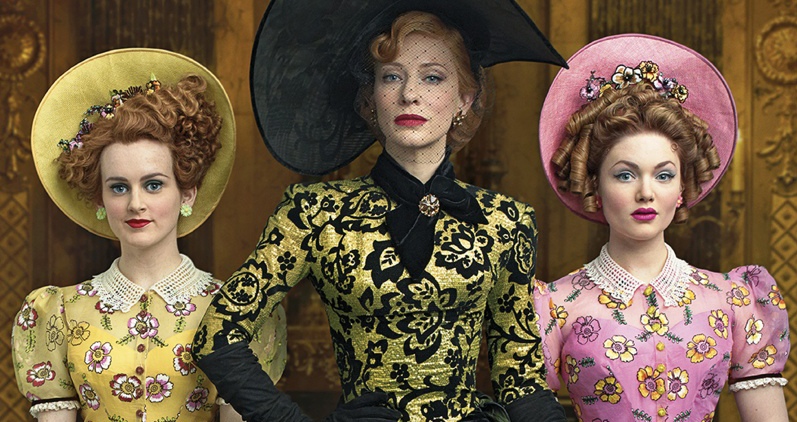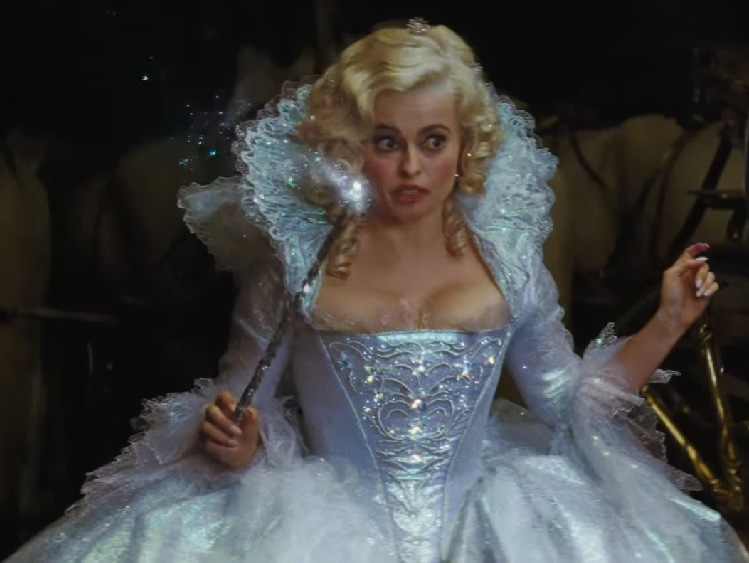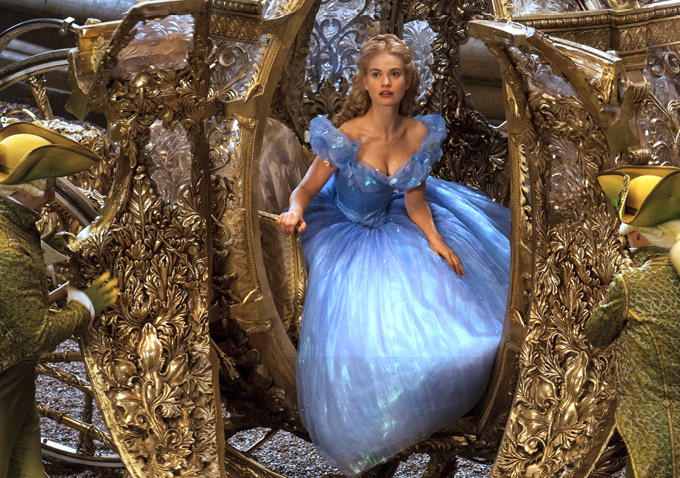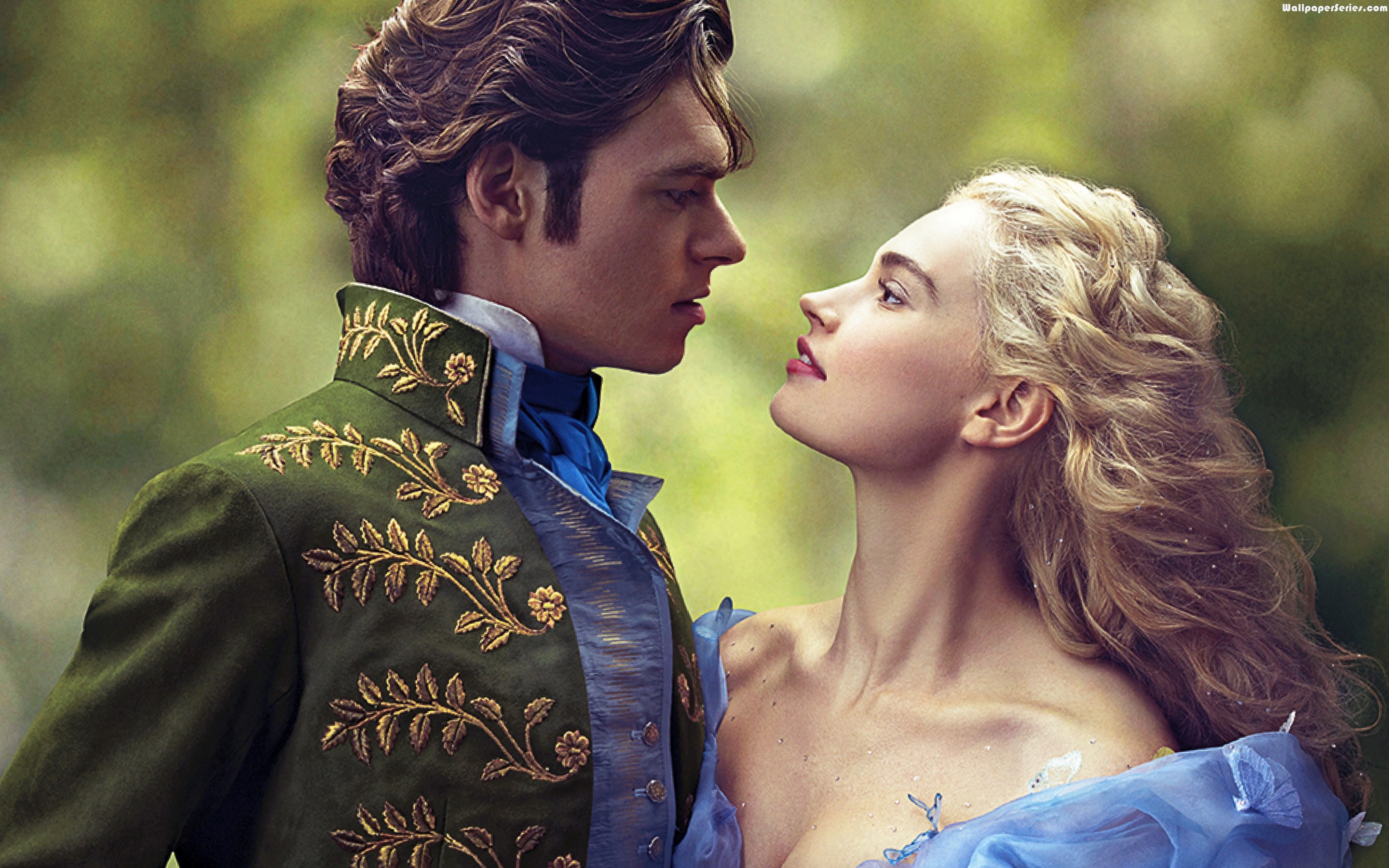As I sat waiting for an evening preview screening of Disney’s latest Cinderella to begin (and because I didn’t have my phone to distract me–everyone had had theirs confiscated in an asinine and outdated measure to prevent piracy), I couldn’t help noticing that the vast majority of the audience were a somewhat diverse group of women and queers–except for the guys talking loudly behind me. They were so straight, one of them said Last Tango In Paris was the ideal date movie. Since at least one of these guys talked about having a son I marveled that either man had ever succeeded in getting a woman to have sex with him, even once–and wondered what these two were doing at Cinderella. Then I remembered they were seated in the “press” row: they were film critics.
Film criticism suffers a lot because white, clueless, straight guys like the ones seated behind me make up the majority. These critics all tend to like films about straight, white, male protagonists like themselves (with the occasional, historically inaccurate, white male gay stand-in to show how “open-minded” they are), one of the many reasons this year’s Oscar nominees were nearly all white people (and the Latino who won big awards did so for making a film about a white, straight guy).
But the movies themselves suffer when only straight guys are allowed to make them: not only are Cinderella’s filmmakers, director Kenneth Branagh (Thor and at the beginning of his career movies with Emma Thompson like Dead Again) and writer Chris Weitz (who with his brother, Paul, made American Pie–Weitz is part Latino, but the vast majority of characters in his films are white guys) men, their previous films have been singularly bereft of queer flair–memorable costumes and hairstyles and a sense of how women talk when they’re alone together–that make up the Cinderella story.
Chris Weitz, as a director, took over the Twilight franchise right after the original film, directed by Catherine Hardwicke, proved to be a box office bonanza. Since then no women have directed the big YA adaptations, even those centered on women and girl protagonists. Similarly, Sam Taylor-Johnson the woman director of the successful (in both the financial and critical sense) recent Fifty Shades of Grey film (with a built-in audience that is mostly women) seems to be poised to be unceremoniously dumped from the franchise–which I’m sure the producers will be quick to tell us has nothing to do with her being a woman, though, odds are, she’ll be replaced by a man. Even when women directors succeed with big studio films they’re treated like failures.
In feminist documentaries like She’s Beautiful When She’s Angry, we see that women in the 1960s at newspapers and magazines were unfairly pigeon-holed into writing for the “women’s section,” but women directors now, 50 years later, don’t even get to helm the few “women and girls’ stories” big studios choose to tell.
Nothing is glaringly wrong with this Cinderella, but if our sole criteria for these middling, dull, straight-guy directors and writers is that they didn’t fuck up too much, we’re in trouble. This affirmative action for mostly mediocre, mostly white guys could also help explain the selection of this year’s Oscar nominees–and why the ratings for the ceremony, along with audience attendance at theaters, is rapidly shrinking.
The film chooses the most familiar parts of the stories (Cinderella is a folktale that has many different iterations including some very old ones from Asia) but also tacks on a syrupy-sweet beginning in which “Ella” (played as a child by Eloise Webb and as an adult by Downton Abby’s Lily James) spends an idyllic childhood with her father (Ben Chaplin) and mother (Agent Carter‘s Hayley Atwell, unrecognizable in a blonde wig and eyebrows) before her mother dies from that disease women in films often get that keeps them looking good on their deathbeds. She tells her daughter who, like her, is so virtuous she has no discernible personality, “Have courage and be kind,” a case of the bland leading the bland.
We’re introduced to Ella’s CGI mouse friends (much more creepy than the animated ones in the 1950 Disney Cinderella—as she kept scooping them up I couldn’t help wondering if she washed her hands afterward) with whom she can communicate, as she also does with a farmhouse menagerie of animals running across the yard. The film has a seemingly willful ignorance of why those animals are there; when we see scraps on Cinderella’s plate they’re just vegetables, even though the goose, in the 19th century English setting the nameless, timeless kingdom the film takes place in resembles, would most likely be Christmas dinner.

Ella’s father remarries, bringing into the house the evil stepmother, here called Lady Tremaine (Cate Blanchett, in a succession of 1940s-inspired gowns, hairstyles and hats that, like her sojourns on the red carpet, show what a great clothes horse she is) and the two stepsisters (Holliday Grainger and Sophie McShera) who, the film is careful to point out are “ugly” on the inside. With their overcurled hair and pursed lips, wearing busy print dresses, the two aren’t terrible to look at, exactly, just tacky.
When the father dies (some versions of the tale have him survive and take part in Cinderella’s degradation) the stepmother banishes Cinderella to sleep in the attic and to become the household’s only servant. Because she sleeps by the dying embers of the fire to keep warm the stepsisters christen her “Cinder-ella.”
Trying to escape the drudgery of home, Cinderella rides her horse into the forest and meets the Prince (Richard Madden, Game of Thrones’ Robb Stark) who is on a hunt. Cinderella, not knowing who he is, talks him out of killing the stag (another instance of creepy CGI) she has just warned to run away. When they part The Prince says, “I hope to see you again, Miss.” Back at the palace the King (Derek Jacobi) pressures the Prince to take a wife and The Prince asks that the palace hold a ball, open not just to gentry but all the young women in the kingdom, so that he might meet the nameless “country girl” again.

We see Cinderella working on her dress, one of her mother’s that she has altered, and inevitably her stepmother and sisters tell her she is not welcome to attend the ball with them, “It would be an insult to take you to the palace dressed in these old rags.” When they leave Cinderella’s fairy godmother (Helena Bonham Carter) appears first disguised as a beggar woman, then after Cinderella gives her a crust of bread and milk revealing her true identity. Her wand exudes the same sparkles as that of the “Bibbidi-Bobbidi-Boo” godmother of the 1950 Disney version, but that effect seems more like laziness (it’s very familiar from other films) than an homage.
The transformation of the pumpkin, mice, lizards, and goose (actually a gander) into respectively, the golden coach, horses, coachmen and driver–and then back again–is the most magical in the film. Less successful is the transformation of the fairy godmother and Cinderella, whose hair and gowns end up looking more like the garish stepsisters’ than they would in a Cinderella directed by Pedro Almodóvar, John Waters, Jane Campion or Gina Prince-Bythewood (the dresses also don’t equal the storybook descriptions of spun gold and silver). It’s like Branagh made a conscious decision to not pay too much attention to “girly” detail like gowns and hair. Also barely adequate, perhaps for similar reasons, is the styling of the Prince. Plenty of women and queer men enjoyed looking at Richard Madden in Game of Thrones (and some of us remember him fondly as the gay EMT in the UK version of Sirens), but here he’s dressed in gaudy jackets, clean-shaven, with his curly hair dyed dark and shellacked into a long pompadour, so that he looks like Zac Efron without the self-tanner. And even though we don’t know where the kingdom is, he’s made to drop his Scottish accent for an English one, that, even to my American ears, sounds shaky.

In spite of her ballgown, James is radiant and doesn’t get stuck in gooeyness of her character, but she has the same odd affect she did in Downton (where she appeared just as I was giving up on the series): even when her character is supposed to be upset she always seems on the verge of breaking into one of her big, bright smiles. Most disappointing is Blanchett, whose stepmother is never given a real reason for her cruelty (besides money, which the movie pays scant attention to, and her own perfunctory rationale that she still grieves for her first husband, which we see no evidence of) so Blanchett has nothing to play except in one brief scene, when she blackmails the Grand Duke (Stellan Skarsgård). Blanchett is talented enough that not only has she convincingly played Bob Dylan, but she made him sexier and more appealing than he’s ever been himself, so Branagh and Weitz really dropped the ball here. The stepmother could have been a great villain, like Ben Kingley’s Snatcher in The Boxtrolls. Instead, she just looks great, like a blonde, chic Joan Crawford in her prime.
An interesting difference between this version of Cinderella and most of the other earlier versions is that it has a little diversity in it. Some of the princesses who arrive at the ball aren’t white. The Prince’s footman (Nonso Anozie) as well as a few of the townspeople are Black. But this tiny, tiny step in the right direction made me wish someone had been bold enough to make the decision to cast a Black actress as Cinderella. Then we would have the reason for the stepsisters’ and stepmother’s irrational and instant hatred of her, no matter how kind she is to them, and also the King and Duke’s reluctance to let The Prince marry her, since, in too many places, those same attitudes survive today. I would have loved to have seen what Lupita Nyong’o (who, like Blanchett, has shown on award show red carpets that she can wear the shit out of great gowns) could have done with the role, but as it has since its beginning, Walt Disney still barely believes in white, brunette princesses, let alone Black ones. I doubt I was the only person in the theater wondering how many more white, blonde storybook heroines I could take.
[youtube_sc url=”https://www.youtube.com/watch?v=20DF6U1HcGQ” iv_load_policy=”3″]
Ren Jender is a queer writer-performer/producer putting a film together. Her writing. besides appearing every week on Bitch Flicks, has also been published in The Toast, RH Reality Check, xoJane and the Feminist Wire. You can follow her on Twitter @renjender

